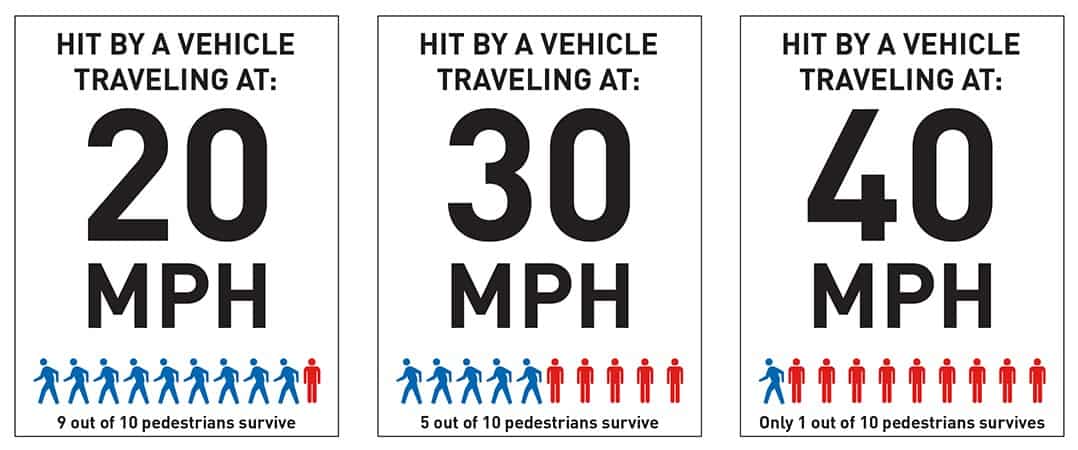Last year, I noted that my office had been contacted about more pedestrian injuries (and deaths) than at any other point in my 30+ years as a plaintiff’s injury lawyer. Sad to say that the statistics support my general observation: more people are getting hurt and dying on our roads.
The Washington State Department of Transportation reports yet another year-over-year increase in pedestrian injuries and fatalities. Between 2017 and 2018, serious pedestrian injuries increased by 12%.
And serious injuries to people on bicycles went up by 32%. (The statistics are well-covered by Pedestrian Deaths Continue to Climb, WSDOT Safety Report Shows.)
Of the fatal and serious injury crashes involving people walking in 2018:
- 62% occurred when the pedestrian was crossing the street;
- 65% occurred where there were no traffic controls (stop signs, traffic signals, etc.).
Systemic problems increase pedestrian injuries, deaths
Across the state, there are many potential factors that account for the increase. But many of the problems are baked into the way our communities were designed around motor vehicle transportation.
An obvious problem is speed.
87% of pedestrian and bicyclist fatalities from 2014-2018 occurred on roads with posted speeds of 30 mph or higher.
The difference between “pedestrian injuries” and “pedestrian fatalities” is very often just the speed of the vehicle. That’s why the city of Seattle started lowering default speed limits down to 20 mph in 2016.
Another problem is road design.
Our streets and roads were mostly built for motor vehicles – and not for actual people. But even in urban areas that were designed for walkability, street design often makes it easy for drivers to exceed the posted speed limits.
The majority of intersections are unmarked, and for decades, sidewalks were an afterthought.

The perception of safety is also important.
While 25 mph might not seem fast when you’re behind the wheel, it seems alarmingly fast if you’re the person walking mere feet from that vehicle. People don’t want to walk where it doesn’t feel safe.
Finally, we need to examine the way we think and speak about driving.
Driving is probably the most dangerous thing most people do on a regular basis, yet we are very casual about it. Even the language around traffic deaths are injuries is casual: it is seen as simply an “accident” when a driver hits and kills someone.
The fact is that when a person is hit, it is never an accident.
Given all of this, the WSDOT report isn’t surprising. It is disappointing, and yet another reminder of how systemic problems contribute to crashes.
More evidence of the huge economic burden of crashes

The estimated cost of the 519 people seriously injured walking or biking in Washington State: $524 million.
The economic burden of motor vehicle crashes is huge. One way or another, we all pay for bad driving.




